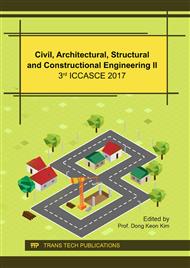p.159
p.166
p.173
p.179
p.183
p.197
p.202
p.213
p.219
The Study on the Relationship between Spatial Network Structure of Teaching Architecture and Students' Flow Behavior Based on Complex Network Analysis
Abstract:
Informal learning is an important part of active learning in higher education. It is of great significance to create a good informal learning space for higher education. However, the current design of university buildings is lack of quality informal learning space. This paper analyzes the relationship between complex network analysis and student behavior, and finds that there exists a close relationship between them. The spatial structure has the essential impact on the distribution of the informal learning. The construction of streamline system places an important role in the formation of learning space network. The density of the network relationship is not a key factor, but the relationship model presents more important. The cohesion of network plays an important role in the formation of spatial network of learning. In the network structure, since the groups with cohesion power are capable to convey the information even faster, the regeneration inside the groups can be achieved through the flow of resource/information.
Info:
Periodical:
Pages:
183-196
Citation:
Online since:
February 2018
Authors:
Price:
Сopyright:
© 2018 Trans Tech Publications Ltd. All Rights Reserved
Share:
Citation:


